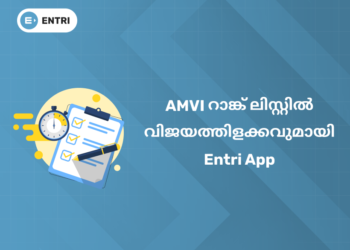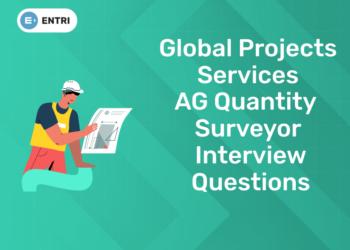Table of Contents
Developing online applications and want to learn Django frameworks, It will be a fascinating journey but you are scared about where to start! Here is a complete guide on learning Django frameworks the easy way. A web application development framework is an organizational structure for setting up a web app including all the services, resources and APIs intfrastructure. By standardizing the means of how web applications are built and deployed online, Web Frameworks emerged This essay will cover the most popular framework Python Django frameworks right now.
We’ll look over the requirements, the learning curve, and several tools to help you get the hang of Django frameworks. We will also explore Entri’s Python course as ways to expedite your Django frameworks learning process, and we’ll provide some advice to help you along the way.
Unlock Your Coding Potential with Our Python Programming Course – Enroll Today
Introduction
Django is a high-quality Python web framework that promotes fast development and clean, useful design. It was designed by experts to make it easy to build web applications quickly and with few rules. Django emphasizes reusability, component-based design, and the “Don’t Repeat Yourself” (DRY) principle. Whether you’re a beginner or an experienced developer, learning Django can greatly enhance your web development skills and allow you to create robust, scalable web applications.
It comes with a wide range of built-in features like ORM (Object-Relational Mapping), automated admin interface, template engine, and robust security mechanisms, to help developers avoid common pitfalls like SQL injection and cross-site scripting . Django follows a “battery-included” philosophy, providing everything needed for web applications, and reducing reliance on third-party libraries
What is Django Framework
The Python Django is a web application framework that accelerates development by letting developers use modules. You can use this module as a web developer to import existing sources and create apps and websites. The development process is much faster because you don’t have to start from scratch when coding.
With Django, you can create stunning websites and websites quickly and easily. The platform is known for its impressive features, including contact forms, admin screens, app management, comment boxes, file upload support, authentication support, and more
Setting up the Django Environment
- Use https://www.python.org/downloads/ to install Python. Use “cmd” to start the terminal after installation. Python —Provide the definition at the command line. It will now display the installed Python.
- Enter pip to install the virtual environment wrapper. Install virtualenvwrapper-win.
- By entering mkvirtualenv environment_name, we can now configure the virtual environment.
- It’s going to create your virtual world. To install Django, use a terminal to type pip install Django.
Unlock Your Coding Potential with Our Python Programming Course – Enroll Today
Advantages for Django
The Django is a high-level Python web framework that will encourages the rapid development and clean, realistic design. Here are some key advantages of using Django framework:
Rapid Development:
The Django’s “batteries-included” idea provides many built-in features like an ORM, the authentication system, and the admin interface. By allowing the developers to quickly build and establish the web applications.
Scalability:
Scalability means the Django is designed to handle the high-traffic websites and can scale to meet the growing demands. Many large-scale websites, such as Instagram and Pinterest, are built with the Django framework.
Security:
Security in Django includes the robust security features to help the developers to avoid common security issue such as SQL injection, the cross-site scripting (XSS), the cross-site request forgery (CSRF), and then the clickjacking. It manages the user authentication and then authorization securely.
Versatility:
Django is suitable for a wide range of projects, from the content management systems and the social networks to scientific computing platforms and the financial applications.
Maintainability:
Django highlight the reusable, maintainable, and the readable code. The framework encourages the use of the DRY (Don’t Repeat Yourself) principle, which helps to keep the codebase clean and efficient.
Extensive Documentation:
Extensive documentation means the Django has extensive and up-to-date documentation that will covers every aspect of the framework. Also making it easier for developers to learn and troubleshoot all the issues.
Community and Ecosystem:
Django has a large and active community that will contributes to a wealth of third-party packages and the expansion. This vibrant ecosystem will provides the tools and libraries for almost any use case, enhancing the productivity.
Features of Django
Django is a robust and a versatile web framework for the Python, designed to simplify the development process while promoting the clean and maintainable code. Here are some of its important features:
Batteries-Included Philosophy:
The Django comes with a wide range of built-in features, like reducing the need for external libraries. These include an ORM, the authentication system, the admin interface, and form handling.
Object-Relational Mapping (ORM):
The ORM allows the developers to interact with the databases using the Python code instead of writing SQL queries. Also it supports the multiple database backends, including the PostgreSQL, MySQL, SQLite, and Oracle.
Automatic Admin Interface:
Django will automatically generates an admin interface for managing the application data based on the models defined by the web developer. This admin interface is highly specialized and expandable.
Security:
Django will includes the numerous security features out of the box, such as protection against SQL injection, cross-site scripting (XSS), and cross-site request forgery (CSRF), also clickjacking. It will also provides a secure way to manage user authentication and authorization.
Scalability:
In this Django is designed to handle the high-traffic websites and can scale to meet the growing demands. Its architecture will supports adding more hardware at the database, application server, and the web server levels.
Versatile Template Engine:
Here Django’s template engine is powerful and flexible one. And it will allowing the developers to generate the dynamic HTML content with the reusable components and the template inheritance.
URL Routing:
Also Django provides a clean and simple way to map the URLs to views using its URL dispatcher. This makes it easy to create human-readable URLs and then organize the application routes.
Middleware:
Middleware components in Django process will requests globally before they reach the view and responses globally after the view has been processed with them. This will allows for tasks like the request logging, session management, and the security checks.
Form Handling:
The Django simplifies form handling, including the form validation, with built-in support for the HTML form generation, form rendering, and then the form processing.
Internationalization and Localization:
Django will provides complete support for translating the applications into the different languages and formatting dates, times, and numbers according to the user’s location.
Unlock Your Coding Potential with Our Python Programming Course – Enroll Today
How to Learn Django?
Learning the Django will effectively involves understanding both the framework and the primary principles of web development. Here are the steps to guide you through this process:
1. Prerequisites:
- Basic Python Knowledge: Make sure that you have a solid understanding of the basics of Python, including the syntax, data types, functionality, and the OOP concepts.
- Web development basics: Should familiar with the HTML, CSS, and the JavaScript, as well as the HTTP and web server basics.
- Install Python: Should verify that your computer is running Python. An make use of the most recent stable version.
- Set up the Django: To install Django, use the pip method:
pip install django
- Establish a Virtual Environment: To manage the reliable on your project, use the virtual environments.
python -m venv myenv
source myenv/bin/activate # On Windows use `myenv\Scripts\activate`
3. Learn the Django Basics:
- The Official Documentation: To gain a general understanding of the Django framework, start with the Django official documentation.
- Start by Creating a Understandable Project:
django-admin startproject myproject
cd myproject
- Launch the Development Server: Here should launch the server,
python manage.py runserver
4. Understand the Django’s Core Components:
- Models: Discover how to use Django’s ORM to define the models and then communicate with the database.
- Views: Should recognize how to construct the views to manage the queries and then provide answers.
- Templates: Toprovide dynamic HTML, become familiar with the Django’s templating language.
- URLs: Discover how to use Django’s URL carrier to route the requests to the relevant views.
5. Build a Simple Application:
- To put the essential ideas into reality, make a straightforward blog or make a to-do list app.
- Use the CRUD (Create, Read, Update, Delete) actions to get practical knowledge of models, views, and the templates.
6. Explore Django in More Depth:
- The Forms: Get familiar with the handling forms, including processing and then validating them.
- Authentication: Put user authorization and authentication into habit.
- The Admin Interface: To handle the data in your application, you should customize the Django admin interface.
7. Explore More Advanced Features:
- You should recognize the advantages of employing the class-based views as opposed to the function-based views.
- Django Rest Framework (DRF): It will discover how to use the Django Rest Framework to create the RESTful APIs.
- Testing: You should make sure that your program is a reliable, create unit and the integration tests.
8. Launch Your Program:
- You should select a hosting platform from the options available, such as the DigitalOcean, the AWS, and the Heroku.
- Should establish a Production Server: It will set up a web server that is, (Apache or Nginx) using the WSGI, a database, and a web server.
- Environment Variables: Should use the environment variables to control the secrets and then settings of your application.
9. Continuous Learning:
- Pay attention to the tutorials and the courses: in-depth the Django courses are available on the websites such as the YouTube, Entri App, or any other platforms.
- Read the Books: William S. Vincent’s “Django for Beginners” and other similar books are great resources to learn the Django framework.
- Participate in the Community: Take part in the local Django meetups, official Django discussion groups, and the sites such as the Stack Overflow.
10. Work on Real Projects:
- Contribute to the Open Source: To obtain the real-world experience, contribute to the Django or any other open-source projects.
- Develop the Portfolio creativity: Should produce and implement the creatives that will highlight your abilities to the potential employers and gatherings.
Entri App – Best Online Python Programming Course
Entri provides a thorough Python programming course that covers everything from fundamental ideas to more complex subjects, giving students a strong foundation in the language. Because the course is offered via an intuitive app, students can access the contents at their own convenience and pace. Among the subjects covered in the Entri Python programming course are modules, file management, functions, control structures, and data types.
Placement Assistance:
The dedication of Entri Apps to facilitating students smooth transition from education to work is what makes them unique. After finishing the Python programming course, students are given committed placement support to help them get employment in top software organisations. To help position eligible applicants, Entri Apps works with a network of partner organisations, recruiters, and business experts.
Unlock Your Coding Potential with Our Python Programming Course – Enroll Today
Frequently Asked Questions
How to become an expert in Django?
How should one go about learning Django?
Before delving into Django, think about enrolling in a Python course or reading a Python book. Entri’s Django track will assist you in taking care of that. Working on actual projects is the greatest way to learn Django. Begin with basic apps and work your way up to more intricate projects.
Is learning Django a wise idea in 2024?
Is a month enough to learn Django?
An average learner can finish learning Django in one to four weeks. Your level of coding experience and weekly study commitment will determine how quickly you pick up Django. Without a solid foundation in Python, it is impossible to learn Django.










